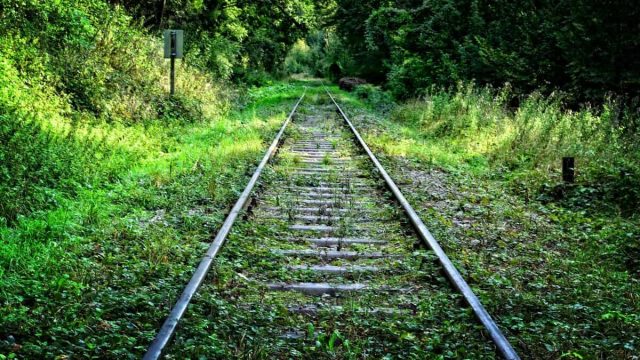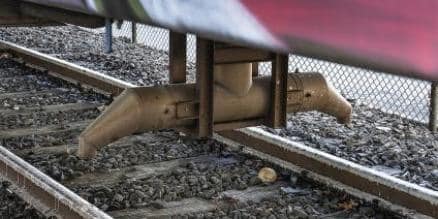
While many of us think of this time of year as autumn, fall, or to some “leaf peeping” season (in reference to the act of venturing into the great outdoors in search of colorful stem appendages), to the MTA, we are currently in the heart of “leaf-fighting season.”
Many New Yorkers have the privilege, nay, luxury of enjoying dead foliage and its many hues, but when you’re committed to running a regional railroad, leafs are a major safety concern – like derailments, general ineptitude, and being beholden to Albany for money and support.
________

So, what is “leaf slime,” also known as “slimy leaf debris”? It’s what it sounds like – what happens when once crisp leaves fall en mass onto train tracks and are smushed into a “gelatinous, slime-like substance,” creating a “slip slide” that “prevents trains from stopping normally.”
In a PSA from late last month on the MTA’s ongoing fight against the ooey gooey problem, the subway is not mentioned by name – only the Long Island Rail Road, Metro-North Railroad and Staten Island Railway. The MTA combats leaf slime on their commuter railroads largely by preventing vegetation on the rails throughout the year by trimming or removing tress from near the tracks. Still though, they proclaim the fight an uphill battle, especially considering the majority of interfering “leaf matter” comes from invasive tree types. So, the MTA has developed leaf slime-fighting trains equipped with spray jets to, in a sense, exfoliate the tracks of veggie smush. Once exfoliated, the fighter trains either scrub the tracks clean or apply “sandite,” which has “the consistency of pancake batter” and makes for better traction.
The war on booger-like leaf residue rages on, pick a leaf off a track near you.
Leave a Reply



